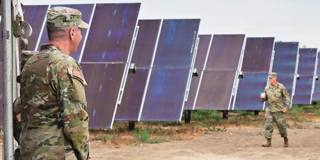Climate change is more than just an environmental or economic problem; it is also a threat multiplier that has forced military leaders to adapt their operations and strategies from the ground up. With its proactive, non-ideological approach, the US defense establishment offers a useful model to follow.
WASHINGTON, DC – As the planet overheats and the transition to a low-carbon economy progresses, climate risks and changing energy choices are reshaping security considerations globally. Climate change, after all, is a “threat multiplier,” a term that one of us (Goodman) coined in 2007 to explain how planetary warming fuels instability in some of the world’s most volatile regions. While political leaders worry that ambitious policies to cut greenhouse-gas (GHG) emissions will cost votes or aggravate geopolitical tensions in an already troubled world, security leaders would remind them that inaction will bring even greater peril.

WASHINGTON, DC – As the planet overheats and the transition to a low-carbon economy progresses, climate risks and changing energy choices are reshaping security considerations globally. Climate change, after all, is a “threat multiplier,” a term that one of us (Goodman) coined in 2007 to explain how planetary warming fuels instability in some of the world’s most volatile regions. While political leaders worry that ambitious policies to cut greenhouse-gas (GHG) emissions will cost votes or aggravate geopolitical tensions in an already troubled world, security leaders would remind them that inaction will bring even greater peril.